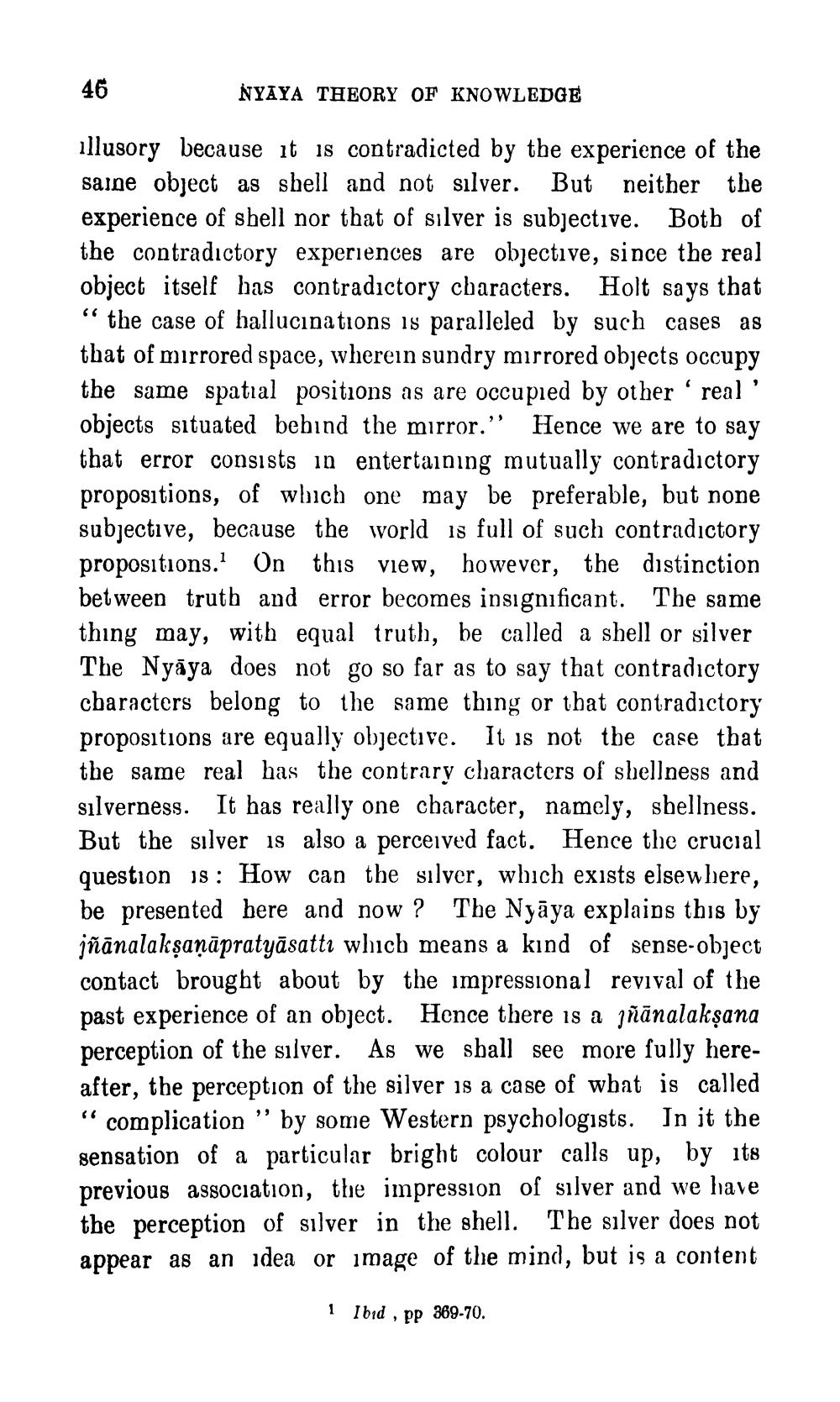________________
46
NYAYA THEORY OF KNOWLEDGE
illusory because it is contradicted by the experience of the saine object as shell and not silver. But neither the experience of sbell nor that of silver is subjective. Botb of the contradictory experiences are objective, since the real object itself has contradictory characters. Holt says that " the case of hallucinations is paralleled by such cases as that of mirrored space, wherein sundry mirrored objects occupy the same spatial positions as are occupied by other real' objects situated behind the mirror." Hence we are to say that error consists in entertaining mutually contradictory propositions, of wbich one may be preferable, but none subjective, because the world is full of such contradictory propositions. On this view, however, the distinction between truth and error becomes insignificant. The same thing may, with equal truth, be called a shell or silver The Nyāya does not go so far as to say that contradictory characters belong to the same thing or that contradictory propositions are equally objective. It is not the case that the same real has the contrary characters of shellness and silverness. It has really one character, namely, shellness. But the silver is also a perceived fact. Hence the crucial question is: How can the silver, which exists elsewhere, be presented here and now ? The Nyāya explains this by jñānalakṣaṇāpratyāsattı which means a kind of sense-object contact brought about by the impressional revival of the past experience of an object. Hence there is a jñānalakşana perception of the silver. As we shall see more fully hereafter, the perception of the silver is a case of what is called “complication ” by some Western psychologists. In it the sensation of a particular bright colour calls up, by its previous association, the impression of silver and we have the perception of silver in the shell. The silver does not appear as an idea or image of the mind, but is a content
1
Ibid, pp 369-70.




